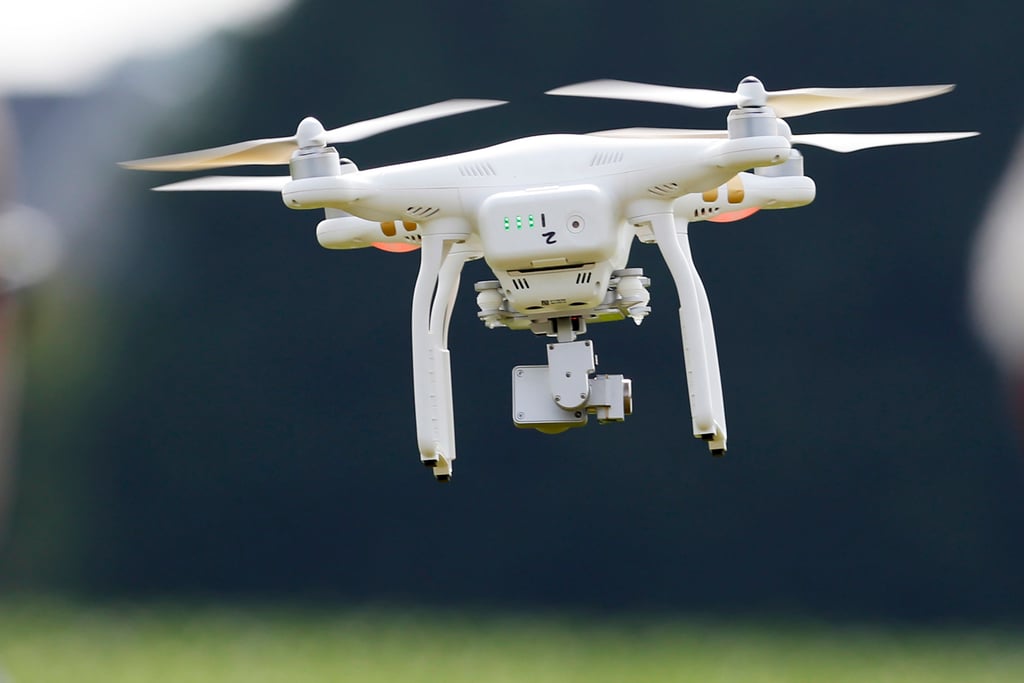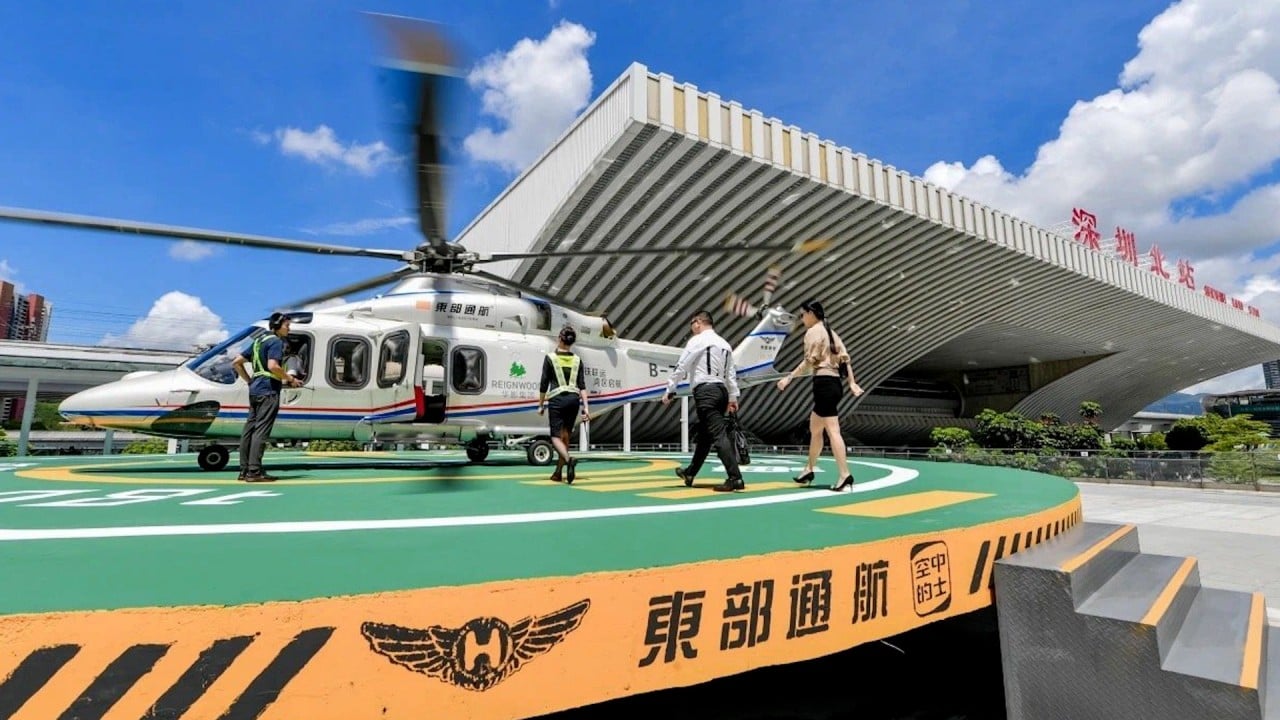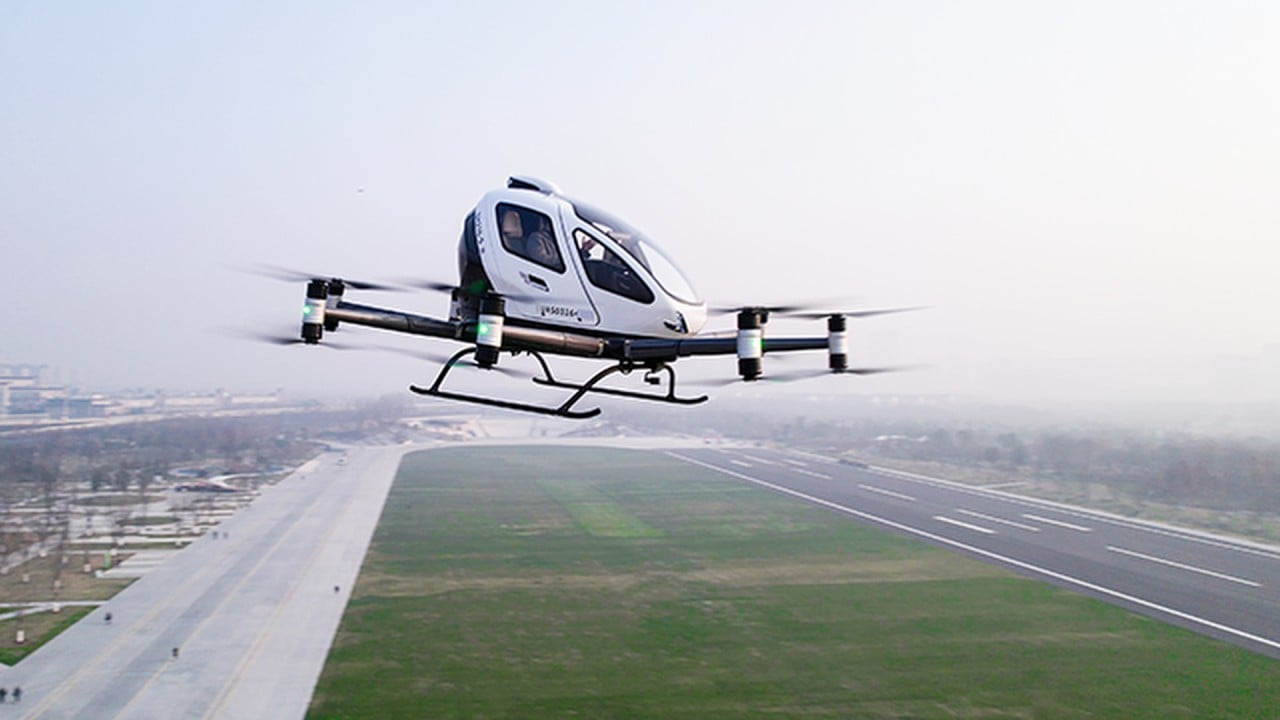China’s low-altitude economy spreads its wings as struggling locales look skyward

The low-altitude economy is an integrated economic model that generally encompasses manned and unmanned activities within airspace below 1,000 metres (3,280 feet), but the range can be extended to 3,000 metres depending on regional and practical needs.
It encompasses the use of vertical take-off and landing aircraft and unmanned aerial vehicles (UAVs) for a range of low-altitude operations, including passenger transport, cargo delivery and other tasks, as well as a vast commercial ecosystem, encompassing infrastructure development and comprehensive support services, creating a significant industry chain.
Investment has been pouring into the sector as regional locales vie for the title of “Sky City”, sparking not only competition but also cooperation between regions.
Just over the weekend, the Beijing-Tianjin-Hebei low-altitude economy industrial alliance was established, and 33 projects were officially approved, including a battery production line and the planning of a low-altitude public route in a science park.
At an event in Tianjin on Saturday, guests from the three regions witnessed a drone show demonstrating low-altitude application scenarios and business models in the air, according to state media.
The size of China’s low-altitude economy reached 506 billion yuan (US$70.9 billion) last year, growing at a year-on-year rate of nearly 34 per cent, according to an April report by CCID Consulting, a subsidiary of the Ministry of Industry and Information Technology (MIIT).
The report forecast that, given the increasing frequency of low-altitude flight activities and the impact of infrastructure investment, the scale of China’s low-altitude economy is expected to surpass 1 trillion yuan by 2026.
The industry boasts a long value chain that spans from R&D and the manufacturing of components such as chips and batteries, to the design and production of drones, eVTOLs (electric vertical take-off and landing vehicles), and applications in sectors such as transport, logistics and agriculture.

Cities are establishing various industry investment funds, offering financial support, land, and favourable policies to attract and develop the promising sector.
This summer, local governments across China have accelerated the roll-out of policies supporting the low-altitude economy.
In the span of just a few weeks, major cities such as Shenzhen and provinces such as Zhejiang and Hubei have introduced supportive measures, with some regions setting clear development targets. For example, Guangzhou aims to grow its low-altitude economy to 150 billion yuan by 2027, while Beijing is striving to boost the city’s economy by more than 100 billion yuan within three years.
Regions focus on different aspects of the industry chain based on its unique resources, with policies promoting the low-altitude economy primarily concentrated on new infrastructure, manufacturing and operational flight support, among others.
As of February, more than 57,000 companies were operating in China’s low-altitude economy, with nearly 21,000 of these established in the past five years, and close to 80 per cent were founded within the last decade, according to the MIIT report.
The report also noted that more than 90 per cent of the nation’s low-altitude economy resources were concentrated in the 50 largest city economies.
The drone industry is the leading sector in the low-altitude economy, and Guangdong province holds a significant advantage in developing the industry due to its high concentration of drone enterprises.
Guangdong cities such as Shenzhen, Guangzhou and Zhuhai are at the forefront of exploring policies related to the low-altitude economy, with the province placing particular emphasis on the layout and expansion of the drone industry chain.
Shenzhen, home to major industry leaders such as DJI, EHang, and Zerotech, leads the country with the most low-altitude economy enterprises, followed by Guangzhou and Beijing.
In 2022, Shenzhen’s drone industry generated nearly 75 billion yuan in production output, accounting for 70 per cent of the national total, with consumer drones capturing 70 per cent of the global market share, according to local government figures.

By the end of 2022, the city had introduced a three-year plan for the sector’s high-quality development. Last year, the city incorporated the low-altitude economy into its government work report. And this year, Shenzhen enacted the country’s first legislation on the low-altitude economy – a success that has also been recognised by the national government.
Shenzhen had 1,730 drone-related enterprises as of last year, covering the entire value chain from manufacturing and R&D to software development.
Shanghai-headquartered Autoflight announced that fares of eVTOLs, popularly known as flying cars, could drop to 6 yuan per kilometre, potentially reducing the cost of a 20-minute flight from Shenzhen to Zhuhai to as low as 240 yuan, compared with the current two-and-a-half-hour drive.
The Yangtze River Delta is also keeping pace, with Shanghai, Jiangsu and Zhejiang advancing their drone industries and exploring new low-altitude applications, such as eVTOL flights between Shanghai and Suzhou, which can complete the journey in under 30 minutes for a few hundred yuan per person.
The Suzhou Industrial Park has also tested drone deliveries for emergency medical supplies, reducing delivery times by an average of 60 per cent.
China’s central and lesser-developed provinces are seizing the opportunity to leap into the low-altitude economy realm. Henan has unveiled an ambitious plan to establish low-altitude infrastructure and an airspace-management system by 2025, aiming to build around 10 general aviation airports and numerous drone take-off sites, with the industry size projected to reach 30 billion yuan.
Local governments should … avoid blindly following strategic trends
Meanwhile, Xian in Shaanxi province has emerged as a major drone hub, with 1,635 new companies registered between 2022 and 2023 alone.
However, experts have cautioned that not every region is equipped to develop a low-altitude economy, despite the nationwide rush.
Considering tight local government finances, it is unwise for financially weaker regions to make heavy investments in the low-altitude economy, according to a report published last month by Anbound, Beijing-based public policy consultancy.
It added that, at this stage, only a few areas are suitable for significant investment, given the constraints of airspace regulations and airworthiness certification.
“The inefficient and redundant introduction and production is leading to increasingly homogenised industrial structures across regions,” Anbound said. “This not only drains local economic and fiscal resources but also stifles the development of regional comparative advantages, ultimately affecting the overall efficiency of the national economy.
“Local governments should tailor their emerging industry policies to their specific conditions and avoid blindly following strategic trends.”
Hefei, an innovation leader in southeast China’s Anhui province, is positioning the low-altitude economy as its next pillar industry, leveraging its proximity to the advanced Yangtze River Delta aerospace sector. The city has attracted major players such as EHang, committing US$100 million in support to solidify its status as a “low-altitude city” by 2025.
Smaller cities such as Rizhao in Shandong province and Loudi in Hunan province are also aiming to capitalise on the burgeoning sector, looking to take off by building necessary infrastructure.
Across the country, more than 10 provinces and cities, including Beijing, Zhejiang, and Henan, are prioritising the development of general aviation airports and low-altitude tourism.
In the latest competition among cities for dominance in the low-altitude economy, industry funds have become a key focus, with provinces and cities such as Anhui, Jiangxi, Chongqing, Guangzhou, Guiyang, Wuhan and Suzhou having launched low-altitude economy industry funds that range between from 1 billion and 20 billion yuan.
For instance, Wuhan plans to establish a 10-billion-yuan fund with contributions from both the city and district levels, while Suzhou has signed more than a dozen low-altitude economy industry funds this year, totalling more than 20 billion yuan and making it the largest in the country.
Source link





